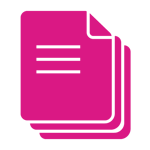- Home
- >Frequently Asked Questions (FAQs)
- >Breast screening and breast density
Breast screening and breast density
Breast screening can detect breast cancers early and save lives.
Breast screening
A breast screen (or mammogram) is a set of x-rays of your breasts. A breast screen can find cancers as small as a grain of rice, before you can feel or notice a change.1536
Screening with BreastScreen NSW is for well women. If you notice any breast changes or symptoms, please see your doctor as soon as possible.
A breast screen can find cancers before they can be seen or felt.1536 When breast cancer is found early, women have more treatment options available and a better chance of getting well again.1473
BreastScreen NSW recommends women aged 50–74 have a mammogram every 2 years.
For women aged 50–74 screening mammograms are the most effective way to detect breast cancer early and increase the chance of survival.1550
The breast cancer death rate has decreased by almost half (45%) since the BreastScreen Australia Program began* for women aged 50–74.1474
If you’re aged 50–74, we recommend a breast screen every 2 years. We will send you an invitation for your breast screens. A small number of women may need a breast screen every year. We will let you know if this applies to you. Speak to your doctor if you are worried.
No. You don’t need a doctor’s referral, but please bring your doctor’s details to your breast screen if you would like them to receive your results.
All breast screens with BreastScreen NSW are free.
Yes, all BreastScreen NSW radiographers are female.
BreastScreen NSW offers mammography as the primary screening tool. Evidence shows that this is the most effective screening test for finding breast cancer early.1550
We use ultrasound to assist with further investigation if something shows up on a breast screen that needs more clarification.
Screening with BreastScreen NSW is for well women who DO NOT have any breast symptoms.
If you notice changes in your breasts, such as a lump, pain or nipple discharge, please see your doctor as soon as possible.
There is a small chance that a breast screen can appear normal, while a cancer is actually present. A very small number of women are diagnosed with breast cancer between their regular screens. If you notice a breast change that is unusual for you, see your doctor as soon as possible.
For women aged 50–74, a breast screen is the most effective screening test for finding breast cancer early.1550
A breast screen will expose you to a small amount of radiation. Modern x-ray screening equipment uses the smallest amount of radiation possible while still getting a high-quality x-ray image.1537
Research shows the benefits of a breast screen outweigh the risks of radiation exposure.
We use breast screens because they are the best way to find breast cancer early. To obtain a clear picture, the screening machine will press your breast firmly for 10-15 seconds. There are usually 2 images taken of each breast. Some women find the pressing uncomfortable, but it is only for a brief time. If you feel uncomfortable, please tell our staff. You can stop the breast screen at any time.
The pressure used to take a breast x-ray image is important to stop any movement that could blur the image. It also spreads the overlapping tissue in the breast. Your breast will be pressed for about 10 to 15 seconds for each image. There is no evidence that the pressure harms the tissue. Please let our staff know if anything worries you during the screen. They will do their best to make you more comfortable.
The BreastScreen NSW program is designed to detect cancers when they are small, so that women have more treatment options available and an improved chance of survival. Most breast cancers found through screening would grow and become harmful if not treated, but a small number may not. Because some cancers may not become harmful, this is sometimes called overdiagnosis. However, there is currently no way of determining which cancers are likely to grow and become harmful and which may not, based on their appearance on a mammogram.1551
The term ‘overdiagnosis’ does not mean an error or a misdiagnosis but refers to breast cancer detected by screening that would not otherwise go on to cause harm.
Breast density
- Breasts are made up of fatty tissue and fibroglandular (dense) tissue. Fibroglandular tissue includes milk ducts, milk glands and supportive tissue.
- Breast density is the ratio of fibroglandular (dense) tissue to fatty tissue.
- Breast density cannot be felt and is not linked to breast size or shape.
- Breast density can only be reported on a mammogram and is commonly referred to as mammographic density.
- For most women, breast density changes over time and decreases as you get older.
- Breast density can mask or hide cancers because dense tissue and breast cancers both appear white on a breast screen (mammogram). This can make it more difficult to see a cancer in the breast when you have your breast screen.
- Higher breast density is linked with a higher risk of developing breast cancer and the size of this risk increases with increasing density.
- High breast density is one risk factor for breast cancer. There are many other risk factors to be considered, including:
- Non-modifiable risk factors (things you can’t change) such as age, family history, genetic and reproductive factors and,
- Modifiable risk factors (things you can change) such as being overweight, being physically inactive and drinking alcohol.
- If you are concerned about your breast density or your breast cancer risk, please discuss this with your GP.
BreastScreen NSW will commence reporting breast (mammographic) density at the end of April 2025. We will use software to report density to clients and their nominated GP.
The Breast Imaging Reporting and Data System (BI-RADS) is a classification system used to describe four categories of breast density. Clients will receive one of the categories below:
BI-RADS category A (least dense):
The breast tissue is almost entirely fatty and not dense.
BI-RADS category B:
The breast tissue is mostly fatty tissue with some scattered areas of fibroglandular density. The breast tissue is not dense.
BI-RADS category C:
The breast tissue is mostly fibroglandular tissue with some areas of fatty tissue. The breast tissue is dense.
BI-RADS category D (most dense):
The breast tissue is almost all fibroglandular tissue and is extremely dense.
No breast density category determined: In a small number of cases a density category cannot be determined due to technical reasons.
- 15% of BreastScreen NSW clients have Category A breast tissue (not dense)
- 45% of BreastScreen NSW clients have Category B breast tissue (not dense)
- 35% of BreastScreen NSW clients have Category C breast tissue (dense)
- 5% of BreastScreen NSW clients have Category D breast tissue (extremely dense)5634
Have regular mammograms
- Routine mammography is recommended for women aged 50 – 74 years (40 – 74 years for Aboriginal and Torres Strait Islander women), including those with dense breasts.
- High breast density alone does not categorise patients as at high risk of breast cancer, as other factors must be considered.
Learn more about your breast cancer risks
- Having dense breasts is common and normal and just one risk factor for breast cancer. It’s important to consider all of the risk factors such as age, family history, and genetic variants; and modifiable risk factors such as diet, weight, alcohol intake, menopausal therapy, and exercise.
- Click to find more information on modifiable risk factors (things you can change) and non-modifiable risk factors (things you can't change).
- You can also learn more about your individual breast cancer risk by completing a risk assessment which will give you a report that can provide the basis for discussions between you and your doctor about your individual breast cancer risk, prevention and management.
The need for additional tests (supplemental screening)
Everyone’s circumstances are unique. For most women, having additional tests won’t be necessary however we recommend having a discussion with your doctor, especially if you have other risk factors. Additional tests may include:
- Magnetic Resonance Imaging (MRI) - a scan that uses strong magnetic fields and computer generated radio waves to produce detailed pictures of the inside of the body.
- Breast Ultrasound - a scan that creates a real-time picture of the inside of the body using sound waves.
- Digital Breast Tomosynthesis (DBT) - uses x-rays the same as 2D mammograms. The x-rays are used at multiple angles to provide a series of pictures of the breast and can create a 3D image of the breast.
- Contrast-enhanced mammography (CEM) - combines breast x-rays (mammograms) with intravenous contrast (x-ray dye the same as the dye used for CT scans) to produce pictures of the breasts.
Additional tests are not currently provided as part of the BreastScreen NSW program, require a referral from a GP and come at a cost with limited Medicare rebate. Presently, there is no agreement in Australia or internationally on the optimal pathway for those with increased breast density, in part because what is appropriate for any individual woman will depend on other risk factors, as well as personal circumstances and preferences. There is currently no clear evidence to prove additional tests are beneficial or essential for women with dense breasts. In some cases, they can lead to false positives (increase in breast biopsies with benign outcomes) and the need for more tests.
Breast density is not related to the look, feel or size of the breast. It cannot be felt or assessed by a physical examination. Some women experience heavy and lumpy breasts and this can be normal for them.
BreastScreen NSW encourages all women to be breast aware. Any new or concerning breast changes such as a lump, dimpling, nipple discharge or breast pain should be reported to a doctor as soon as possible for appropriate investigation.
Yes. Younger women generally have more dense breasts compared to older women. Breast density usually reduces with age, particularly after menopause.
Breast density is also influenced by other factors including genetics, Body Mass Index (a lower BMI is associated with higher breast density), having had children (may decrease breast density), hormone replacement therapy (may increase breast density), and anti-estrogen therapy (may decrease breast density).
If you are concerned about a change in your breast density report, please speak to your GP.
Breast density can be familial (run in the family) however the only way to really know your breast density is to have a mammogram.
In a small number of cases software used to report breast density cannot determine a reading due to technical reasons. Unless the issue persists, your breast density will be measured at your next BreastScreen NSW appointment. We won’t repeat your breast screen if the software can’t report your breast density as it may unnecessarily expose you to additional radiation. Speak to your doctor if you have any questions or concerns about this.
It can, depending on the type of implant you have. Please tell our staff when you book if you have implants or have had breast enhancement injections, and our radiographer will discuss this with you at your appointment.
It can, depending on the type of device you have. Please tell our staff when you book if you have a medical device in your chest and our radiographer will discuss this with you at your appointment.
- Breast density can be influenced by hormone treatment.
- Reading of mammograms can be impacted by surgical procedures due to the presence of scar tissue.
BreastScreen NSW recommends clients speak with their specialist or doctor if they have questions about their breast density.
Your breast density will be reported when you have your next breast screen (mammogram). If you have any questions or concerns, please speak with one of our staff.
If you don’t see your answer, look under ‘Your breast screen FAQs’.



